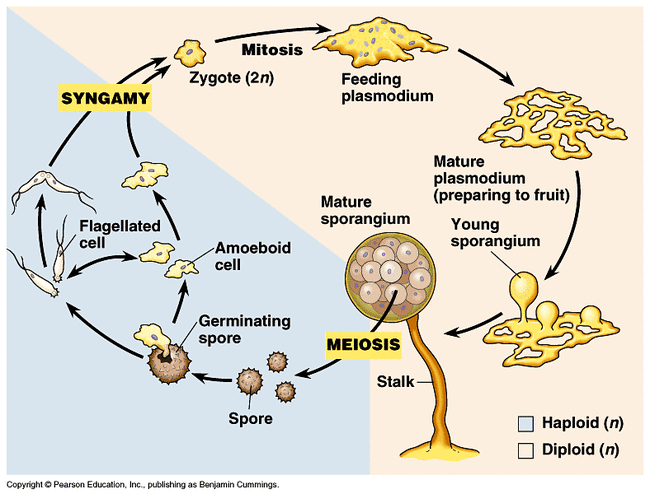Description:
Nutrition(7):
- Diet consists of bacteria that are found in the soil and decaying organic matter
- Uninucleate amoebae of D. discoideum consume bacteria found in its natural habitat, which includes deciduous forest soil and decaying leaves
Reproduction(3):
- Life cycle has a unicellular and multicellular phase
- Unicellular phase: consists of solitary amoeba feeding on bacteria and reproducing by binary fission
- When challenged by starvation, the amoeba collect into groups and develop into multicellular fruiting bodies
Interesting facts(3):
- Ideal model organism with which to study a range of biological problems, including signal transduction, chemotaxis, disease, phagocytosis and cellular differentiation
Summary of Research Article(5):
The research paper The genome of the social amoeba Dictyostelium discoideum seeks to describe the genome of the Dictyostelium discoideum. This topic is of importance because it aims to shed light on the social amoebae's (slime mold's) ability to alternate between unicellular and multicellular forms. The gene-dense chromosomes of this organism encode approximately 12,500 predicted proteins, a high proportion of which have long, repetitive amino acid tracts. There are many genes for polyketide synthases and ABC transporters, suggesting an extensive secondary metabolism for producing and exporting small molecules. The genome is rich in complex repeats, one class of which is clustered and may serve as centromeres. Partial copies of the extrachromosomal ribosomal DNA (rDNA) element are found at the ends of each chromosome, suggesting a novel telomere structure and the use of a common mechanism to maintain both the rDNA and chromosomal termini. This paper found that Dictyostelium seems to have retained more of the diversity of the ancestral genome than have plants, animals or fungi. Applications for this study include: understanding the genes that may lead to more research to control amoebic diseases, usage of D. discoideum as a model host for bacterial pathogenesis, they study of the organism as a model to study other disease processes.
The research paper The genome of the social amoeba Dictyostelium discoideum seeks to describe the genome of the Dictyostelium discoideum. This topic is of importance because it aims to shed light on the social amoebae's (slime mold's) ability to alternate between unicellular and multicellular forms. The gene-dense chromosomes of this organism encode approximately 12,500 predicted proteins, a high proportion of which have long, repetitive amino acid tracts. There are many genes for polyketide synthases and ABC transporters, suggesting an extensive secondary metabolism for producing and exporting small molecules. The genome is rich in complex repeats, one class of which is clustered and may serve as centromeres. Partial copies of the extrachromosomal ribosomal DNA (rDNA) element are found at the ends of each chromosome, suggesting a novel telomere structure and the use of a common mechanism to maintain both the rDNA and chromosomal termini. This paper found that Dictyostelium seems to have retained more of the diversity of the ancestral genome than have plants, animals or fungi. Applications for this study include: understanding the genes that may lead to more research to control amoebic diseases, usage of D. discoideum as a model host for bacterial pathogenesis, they study of the organism as a model to study other disease processes.

